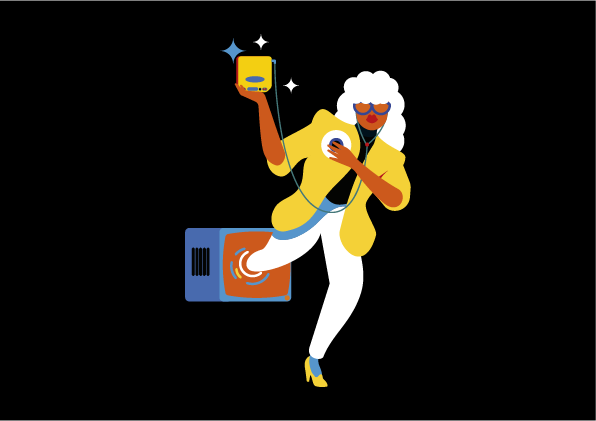How are European broadcasters facing up to the challenges ahead? We asked the leading broadcasters in Germany and the Netherlands how they view the future of TV.
What streaming strategies are you taking to attract a more diverse audience?
Ton Rozestraten: To have a successful streaming strategy you need at least two things. One, great content, preferably created by yourself, and two, a smart distribution strategy. Regarding the content: RTL’s aim is to touch the hearts and minds of everyone in the Netherlands with our stories and content. Therefore, RTL offers a wide range of content; sports, big entertainment, reality, news, talk shows, series, quizzes and kids’ programming.
The development of own formats and the creation of Intellectual Property (IP) is essential for a sustainable business model. Creating your own IP means long-term investment in creative talent and the guts to try, fail and succeed. Within RTL we have built a Creative Unit with a special focus on this, and it has developed several successful formats. With your own IP you have the rights to the content and that allows you to offer the content through various distribution channels.
Audience behaviour is rapidly changing
TR: That’s the second part of a successful streaming strategy: distribution. We offer our content via our linear channels, but we also bring our content to the consumer via Videoland. It is the number one local streaming platform with a subscription model offering exclusive (local) content. Taking the international offer in to account, we are number two after Netflix. And we continue to grow. More and more consumers are watching our content on Videoland at times and devices they choose. We don’t care where and when they watch, as long as they watch our content.
Lars-Eric Mann: Streaming is a critical success factor for RTL Deutschland, whether linear or non-linear, short-form or long-form, entertainment or information. We are the main streamer in the German market. The focus here is on our multimedia app RTL+, which features audio and magazine content as well as video. This makes us the “local hero” among streamers and the most successful German VoD platform, with 4.5 million subscribers. With a wealth of original content spanning entertainment, reality, sport, drama, kids’ TV and documentaries, we have something to offer every viewer. Our linear TV channels are also available to stream live, and you have easy access to more related content, like music playlists from the shows.
How have the viewing habits of consumers changed in the last few years?
LEM: Non-linear streaming platforms give viewers the freedom to consume content when and where they want. However, this is still used differently depending on age and genre. This is a great opportunity, as we can use smart programming to increase usage in both linear and non-linear for some formats. For example, with our big fiction highlight Sisi we see exciting reach effects through intelligent “windowing.”
How will this change the advertising model?
TR: Well, I assume this is no news to the readers of TV Key Facts: people are watching content whenever and wherever they choose to do so.
And there is a growing number of people who are willing to pay for content. With the availability of all the international and local streaming platforms such as Netflix, Amazon Prime, Disney and Videoland, the consumer has a lot to choose from. At first, we saw mainly younger people use those services, but now it is commonly used by all ages.
The advertising model initially seemed to have no place here, but more and more subscription platforms are considering offering a subscription at a lower price with ads. Videoland was the first in Europe to offer this model and it is successful. The subscriptions are growing every month. Advertisers find this really interesting, as this gives them access to a premium environment. An environment in which the consumer has actively chosen ads and therefore has a more positive attitude towards the advertisements shown.
On Videoland we put the consumer at the centre of the ad model with a limited number of ads and ads that are integrated and relevant for the consumer.
We believe in a consumer centric advertising model. Putting the consumer in the centre and making the advertising experience as good as possible to create the best impact for the advertisers.
What type of content is successfully attracting large audiences on linear and what will do so in the future?
TR: With all the streaming offers available, where does that leave linear TV? You have to realise that linear is not dead and will not die. Live linear viewing will be more and more centred around news, talk shows, big entertainment and, of course, sports. That will still capture large audiences in the future and will deliver mass reach to advertisers. So, advertisers can still attain mass reach by advertising on linear channels in combination with ads on demand platforms. With all the targeting options online and with Addressable TV, advertisers can optimise their Total Video campaigns as never before.
LEM: The content has to inspire and surprise, and it usually has high talk value. It could be a compelling entertainment format, a major football match or an investigative exposé. My favourite example is I’m a celebrity… Get me out of here!, which is smashing all records on both TV and VoD.
What type of content is successful at capturing the attention of younger audiences: millennials, Gen Z and kids?
LEM: Looking at Gen Z, it’s easy to get the impression that they’re mainly watching short-term content on social platforms nowadays. But that simply isn’t true. The younger generation are particularly keen on sporting events, live shows and dating formats, such as football, I’m a celebrity… Get me out of here!, The Bachelor or Let’s Dance. They also like watching this content linearly.
Do you have different strategies for attracting audiences in linear and non-linear TV?
LEM: We focus on a symbiosis of linear and non-linear content. Our strength lies in making our content available to our users across all channels – optimally coordinated and interconnected. We think carefully about which content will premiere where – linearly on free-to-air or non-linearly on RTL+. This is a major USP compared with the US players and one we’ll be leveraging even further. That gives us the opportunity to significantly increase our reach, both linear and non-linear.
So, what does the future look like?
Despite the huge challenges facing the country, more people (45%) are feeling optimistic than not (35%) about the future of Britain. While financial concerns might be widespread, which is primarily overtaken with the desire to move on beyond the pandemic months and find peace within ourselves and with others.
Mainstream Britain & media land compared
With any research project (especially with one as large and complex as this!), the potential for bias is always a risk. So, we turned the spotlight on ourselves – us media professionals – to see which codes of mainstream Britishness stood out for people in the industry, compared with the general population.
We found that, overall, media professionals related more than mainstream Britain to Everyday Magic. Eighty-seven percent of media professionals cited everyday magic as a value that unites the nation, compared with seventy-four percent of mainstream audiences.

The advertising perspective
What new advertising strategies are you looking at for the future of TV?
TR: As I mentioned before, we believe in a consumer centric advertising model. Putting the consumer in the centre and making the advertising experience as good as possible to create the best impact for the advertisers. Furthermore, we want to bring the market to the next level by focusing on innovation. At Ad Alliance NL we introduced “Team Early,” which experiments and innovates together with advertisers and agencies. We fail and succeed together, but most of all, we learn. QR codes, addressable advertising, pause advertising, these are all “Team Early” projects brought to fruition with customers.
LEM: The requirements from the advertising market are clear. They’re demanding cross-channel metrics and perfect advertising impact. Our CrossOver Evolution is a response to precisely this demand. We have to move away from a silo mentality and towards cross-genre campaigns. It doesn’t matter whether the advertising contact takes place on TV, digital platforms, on ATV or CTV. What is much more important is the personalised display of advertising messages – while always complying with data protection rules. In the future, this will have to be tailored even more efficiently to the needs of consumers to maximise the advertising impact.
What would you like to achieve with your focused movement toward Addressable TV, and what do you think it can achieve?
TR: Addressable brings together the best of two worlds. The power of mass reach and the possibility to target in this mass reach. With Addressable TV we see different opportunities.
First of all, we think we can offer regional (new) clients an interesting proposition. Clients who have the goal to reach a lot of people in a certain segment of the Netherlands. Secondly, for national advertisers who want distinct messages for different target groups, Addressable TV is an interesting and effective option.
We also see opportunities for online video campaigns on the big screen. In the battle against the global players, with ATV we offer more scale and brand safe possibilities to the advertisers in the digital ecosystem.
What kind of technology is being used to simplify brands’ access to your inventory and create more efficient ways to access advertising opportunities?
TR: We use smartclip for executing our online video campaigns, managed and programmatic. The best technology is crucial for an advertiser, but also for the consumer.
Our goal is to make the buying and monitoring of managed online video campaigns easier and more accessible for clients. From that perspective we are developing our own local buying platform for our direct clients. We start by offering online video advertising via the platform and we have plans to expand this offer with Addressable TV and linear TV in the future.
How do you ensure individual privacy with Addressable TV?
TR: Of course, consumer privacy is crucial for us, but also for the distributors we work with. Privacy is a key topic in our consumer centric advertising strategy. At Videoland, for example, we not only follow the legal guidelines, but we go a step further. None of the personal data of Videoland consumers enters the advertising ecosystem. This means that we do not do business with parties that cannot deal with this. We want to have control over everything that happens on Videoland and offer the best experience to consumers by protecting their data.
How will the integration of augmented reality (AR) and virtual reality (VR) technologies impact the future of television?
TR: There are many technological developments that will have an impact. Developments in NFTs, AI and gamification are moving incredibly fast and bring both opportunities and risks. As a large media company, RTL has the responsibility to contribute to raising awareness of these issues. In addition to coverage in our news programmes, we have been experimenting in the digital world ourselves in order to increase our knowledge. For example, with the launch of NFTs we investigated the interest in digital collectibles amongst the public. We also use AI to create promotional material and investigate how our content can be translated into a metaverse.
From an advertising perspective, we are using Artificial Intelligence to create and sell billboards and commercials. We are experimenting together with advertisers to bring our learnings into practice and make it concrete and beneficial for the advertising business. In almost 25% of our creative work we are making use of AI. An innovation like this demands that you continuously explore and develop your business.
LEM: We’re already implementing campaigns with virtual placement. We’ve also experimented with AR cases in the past. This will continue to develop and offers considerable potential, but I firmly believe that it has to be easily consumable and provide genuine added value.
Business measurement and KPI
What measurements do we need to ensure that TV is as valued as it deserves?
LEM: I’m convinced that TV measurement alone will no longer be the number one choice. The market is demanding cross-channel reach disclosure. Advertisers want to know when, where and how their campaign reach was achieved. It’s primarily about transparency and comparability of performance data – partly also in order to keep up with rival US players. That’s why we’re supporting the new measurement standard, X-Reach, being developed by the German Television Research Working Group (AGF).
To ensure accurate cross media measurement, it’s extremely important that all usage situations involving video content are taken into account, as users consume their content when and how they want. This is exactly what AGF’s new cross-media measurement standard X-Reach addresses, responding to advertisers’ expectations for transparent, crosschannel metrics.
TR: For TV measurement, we developed research in partnership with TV sales houses, media agencies and advertisers, and established a currency. It was, and it still is, a joint industry effort. The research stands for quality and reliability. Investments are substantial, but all market parties attach a lot of value to a high quality, transparent currency.
To ensure accurate cross media measurement, it’s extremely important that all usage situations involving video content are taken into account, as users consume their content when and how they want.
It is with astonishment that I had to conclude that for some advertisers different rules seem to apply to the online world. In the online world, data is assumed to be correct, even if it has been demonstrated that the quality of the data leaves much to be desired. In the Netherlands, we want to organise a counter-movement, again from a joint industry initiative. Together with all market parties, we have invested heavily in National Media Research (NMO). This is an initiative by the organisations for media outreach research in the Netherlands: Stichting KijkOnderzoek (SKO), Stichting Nationaal Luister Onderzoek (NLO), Stichting Nationaal Onderzoek Multimedia (NOM) and the Verenigde Internet Operators (VINEX). All the major Dutch media operators and broadcasters are involved, as well as the Association of Advertisers (BVA) and the Platform of Media Advisors/Agencies (PMA).
Under the flag of NMO, the reach of television, radio, print and online will be measured and will eventually replace the current standards. Each individual range study is renewed and greatly improved. The cross-media design of this new research is a world first, because media channels have never been jointly measured and reported in this way before.
An initiative like this demands a cooperative mindset and the willingness to bring the media market a step further by setting a standard based on quality, transparency and reality.
As Ad Alliance we really believe in joint industry movements like this and are actively involved in bringing NMO to reality.






















